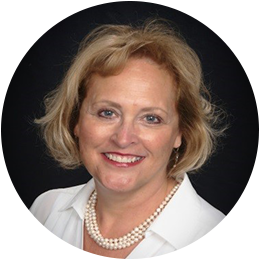
If you’re a health plan, have internal health plans, or contribute provider information to a health plan, there are 4 new compliance tasks that went into effect on January 1, 2022 that you should know about.
According to the No Surprises Act, you must:
- Provide an accurate public-facing provider directory
- Verify the provider directory data at least once every 90 days
- Update the provider directory within two business days of a provider's information change
- Respond to inquiries regarding the provider or facility’s network status within one business day (in-network or out-of-network)
In this post, we’ll provide an overview of the No Surprises Act and its requirements. We’ll also explore how different VerityStream solutions can keep you organized, compliant, and stress-free.
What is the No Surprises Act?
The No Surprises Act protects people covered under group and individual health plans from receiving surprise medical bills when they receive most emergency services, non-emergency services from out-of-network providers at in-network facilities, and services from out-of-network air ambulance service providers.
The act requires health insurers and healthcare providers to work together to ensure consumers are informed and protected. It also outlines a few different requirements:
- A new verified provider directory for fully insured group health plans, individual plans, and self-funded employer plans.
- The issue of a Good Faith Estimate (GFE) for services dependent upon the date that the services are scheduled. The GFE needs to include a list of services, the diagnosis code, service code, and expected costs for each of those elements.
- Independent Dispute Resolution (IDR), which may be used to determine final payment for services covered under the federal ban on surprise billing when there isn’t an applicable state law.
Why was the No Surprises Act Implemented?
The No Surprises Act was developed to protect patients from worrying about unexpected medical bills. It establishes new federal protections against most surprise out-of-network medical bills.
These new federal protections will:
- Apply to most surprise bills for emergency care
- Apply to non-emergency services provided by out-of-network providers at in-network facilities
- Allow consumers to appeal disputes over coverage of surprise medical bills to an external reviewer
The protections will also help address a variety of patient pain points, like:
- Being given the wrong phone number for a provider
- Not knowing a physician is out-of-network
- Dealing with a network that isn’t accepting new patients
- Finding that a provider is no longer at the location listed
- Unknowingly scheduling an appointment with a provider incorrectly listed as being in-network
While the new law provides patients with important federal protection from unexpected out-of-network medical bills, its associated regulations and provisions can be a heavy task for health plans as they require outreach to providers for attestations every 90 days to confirm directory accuracy. If you’re concerned about meeting these new requirements, we have great news for you! VerityStream has easy-to-use tools to support your organization's compliance with the No Surprises Act.
How can VerityStream Help?
To ensure you remain compliant, there are three main focus areas that the VerityStream suite of services can help you with: accurate data gathering, provider information verification, and reporting capabilities. These capabilities are available through all of our solutions including our legacy solutions, EchoCredentialing, EchoOneApp, and MSOW.
If you are a current client, we recommend you reach out to your account representative for more precise details on how your current solution can support your organization’s compliance needs. Here is an outline of each area of focus.
Obtain accurate data for directories
- Configure outreach and provider information
- Facilitate periodic review of provider directory information
- Provide proof of compliance
Verify Provider Information
- Quickly review, approve, or deny changes to support an up-to-date provider directory
- Some solutions can accommodate tracking and workflows to facilitate monitoring and to coordinate updates and future audits
Your Reporting Needs
- Audit exports to send to payers to account for new changes
- Export provider data as it relates to in-network and out-of-network statuses
For those who have adopted (or are preparing to adopt) CredentialStream, our complete provider lifecycle solution, you will find that it will help with the No Surprises Act in four main ways:
- Create an automated notification every 90 days that reminds providers to verify their directory information
- Use Workflows to create a simple checklist, including timelines that providers must adhere to when reviewing directory information, with an added workflow linking to notifications
- Use Surveys or Application configurations to request that providers attest to the accuracy of their directory information in the Hub
- Review provider information and export data for the most accurate provider-facing directory
In addition to those capabilities, CredentialStream’s newest offering, Network, brings together the full provider lifecycle within a health plan, including credentialing, recredentialing, and provider data management activities. In support of the No Surprises Act, Network will assist in improving directory accuracy.
With Network, users can:
- Deliver Content reports, Workflows, and Connect API
- Access the provider portal, the Hub, so providers can review directory information related to the provider’s participating network facilitating attestation
- Use automated Workflows to generate letters to send to providers to meet the 90-day requirement directly within the Hub
- Gain approval for record changes and apply changes automatically upon approval
- Maintain a log of audit submissions
- Employ batch updating to remove providers from directories
With the right tools in hand, we’re certain the No Surprises Act won’t be able to catch any one of you off guard. As always, VerityStream is here to help. If you have any questions about how our suite of tools can help, give us a call. For access to the full webinar outlining in-depth information on how all of our solutions can be utilized, watch a recording here.
